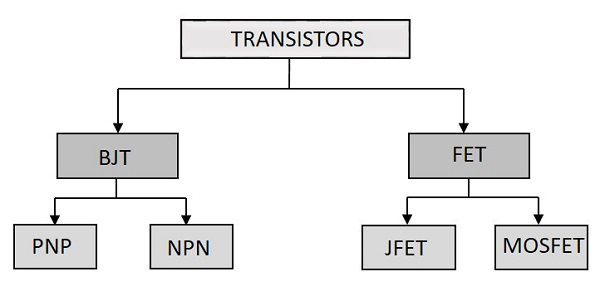Transistor and Types
A transistor is a semiconductor device used to amplify or switch electronic signals and electrical power. It is a fundamental building block of modern electronic devices and is used in a wide variety of applications, including computer processors, memory chips, and amplifiers.
Key Characteristics of Transistors
-
Three-Terminal Device : Transistors typically have three terminals: the emitter, base, and collector for bipolar junction transistors (BJTs), or the source, gate, and drain for field-effect transistors (FETs).
-
Current Control: In BJTs, the current flowing between the collector and emitter is controlled by the current flowing into the base. In FETs, the current flowing between the source and drain is controlled by the voltage applied to the gate.
-
Amplification: Transistors can amplify weak signals. A small input current (or voltage) at the base (or gate) can control a larger current flowing through the collector-emitter (or source-drain) path.
-
Switching: Transistors can act as electronic switches, turning on and off the flow of current in a circuit.
Types of Transistors

Bipolar Junction Transistors (BJTs)
BJTs are made up of three layers of semiconductor material, either in an NPN or PNP configuration.
-
NPN Transistor: In this type, the majority charge carriers are electrons. The current flows from the collector to the emitter, controlled by the base current.
-
PNP Transistor: In this type, the majority charge carriers are holes. The current flows from the emitter to the collector, controlled by the base current.
Field-Effect Transistors (FETs)
FETs control current by applying voltage to the gate terminal, creating an electric field that controls the flow of current between the source and drain terminals.
-
Junction FET (JFET): Has a gate-channel junction that controls the current flow.
-
Metal-Oxide-Semiconductor FET (MOSFET): Has an insulated gate that controls the current. MOSFETs are widely used in digital and analog circuits.